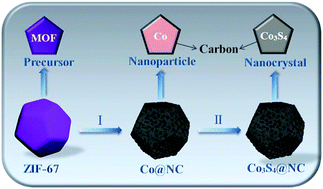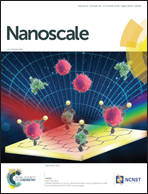N-Rich carbon-coated Co3S4 ultrafine nanocrystals derived from ZIF-67 as an advanced anode for sodium-ion batteries
Abstract
Transition metal sulfides (TMSs) have been extensively studied as electrode materials for sodium-ion batteries by virtue of their high theoretical capacity. However, the poor cyclability limits the practical application of TMSs in sodium ion batteries. In this study, N-rich carbon-coated Co3S4 ultrafine nanocrystal (Co3S4@NC) was prepared by utilizing ZIF-67 as a precursor through continuous carbonization and sulfuration processes, exhibiting ultrafine nanocrystals with a diameter of about 5 nm. When utilized as the anode for sodium ion batteries, the nanohybrid material exhibits remarkable cycling performance with a high specific capacity of 420.9 mA h g−1 at the current density of 100 mA g−1 after 100 cycles, indicating that the cycling performance is strengthened by the nitrogen-doped carbon coating. Impressively, the obtained material shows good rate performances with reversible specific capacities of 386.7, 284.0, and 151.2 mA h g−1 at 400, 1000, and 1400 mA g−1, respectively, due to the high surface-capacitance contribution and porous structure inherited from the precursor, which finally results in the increase in infiltration of electrolyte and the accelerating diffusion rate of Na+. This study sheds light on the routes to improve the performance of TMSs@nitrogen-doped carbon nanohybrid materials for sodium ion batteries.



 Please wait while we load your content...
Please wait while we load your content...